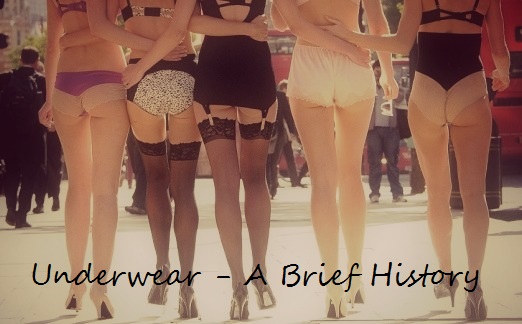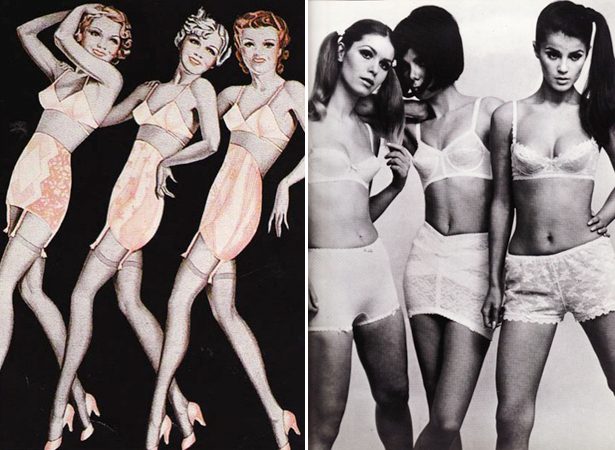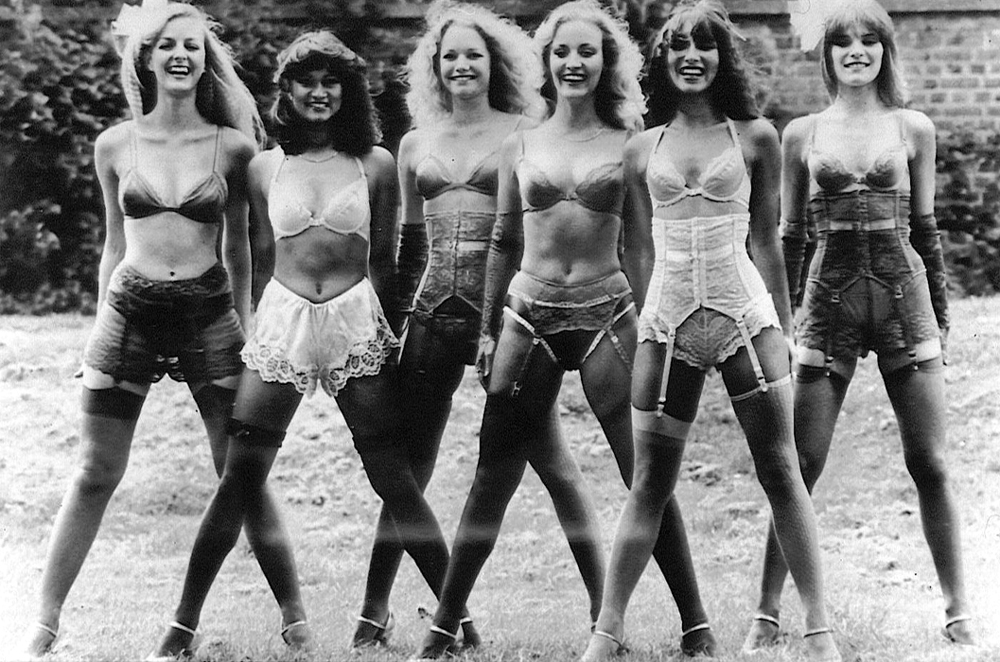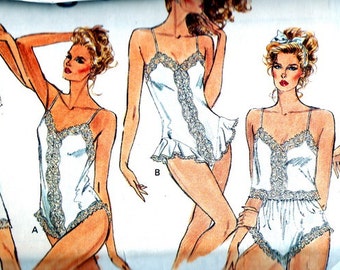
"They are the ugliest things I
ever saw: I will never put them on again. I dragged my dress in the dirt for
fear someone would spy them. My finest dimity pair with real
Swiss lace is quite useless to me for I lost one leg and did not deem it proper
to pick it up, and so walked off leaving it in the street behind me,
and the lace had cost six shillings a yard..."
Fashionable young ladies of the Regency were fortunate to escape one
constriction that had haunted the lives of their mothers and would later
fall to their daughters and granddaughters: The Boned Corset. Where
both the Georgian and Victorian
silhouette called for unnaturally small waists and straight backs,
designers during the Regency were captivated by the “natural Female
form.” Drawing inspiration from classic
Greek and Roman statuary (all things ancient Greece were the rage at
this time) they allowed for column dresses with minimal flouncing. Where
once layers of hoops and petticoats reined, now almost modern dress
shape took over. Waists were raised to just under the bosom while skirts
hung free.
Swiss lace is quite useless to me for I lost one leg and did not deem it proper
to pick it up, and so walked off leaving it in the street behind me,
and the lace had cost six shillings a yard..."
 These new styles called for an all new type of support garment. Thus was
born the short corset, forbearer to today’s modern undergarments.
Unlike Victorian corsets which hooked in the front and laced up the
back, older corsets only laced up the back in a zigzag fashion using one
string—cross lacing would be invented later on—and stiffened in the
front with a carved wooden or bone busk which created a straight
posture and separated the bosoms for the “heaving” effect, so popular at
the time. Pre-Regency corsets constrained the body from the hips to the
bust line and were held on with straps over the shoulders where gown
sleeves could be laced on. These corsets could be a separate garment
worn under clothes, or used as the bodice of the dress itself. It would
be worn over a chemise and stockings (knee to thigh high and held up
with garters). In the 1700’s petticoats and panniers would be worn over
that, though during the Regency this was slimmed down to one
petticoat—and only if necessary. Drawers would not be invented until
1806. Until then, women walked free of any other undergarments.
These new styles called for an all new type of support garment. Thus was
born the short corset, forbearer to today’s modern undergarments.
Unlike Victorian corsets which hooked in the front and laced up the
back, older corsets only laced up the back in a zigzag fashion using one
string—cross lacing would be invented later on—and stiffened in the
front with a carved wooden or bone busk which created a straight
posture and separated the bosoms for the “heaving” effect, so popular at
the time. Pre-Regency corsets constrained the body from the hips to the
bust line and were held on with straps over the shoulders where gown
sleeves could be laced on. These corsets could be a separate garment
worn under clothes, or used as the bodice of the dress itself. It would
be worn over a chemise and stockings (knee to thigh high and held up
with garters). In the 1700’s petticoats and panniers would be worn over
that, though during the Regency this was slimmed down to one
petticoat—and only if necessary. Drawers would not be invented until
1806. Until then, women walked free of any other undergarments.
 The
“new” Regency Corset was a clever combination of straps, tapes and
laces. They came in many styles—some for controlling the figure, some
for pushing the bosom up and out in a shelf-like display. Two of these
types are shown in this picture of 1819 stays from the Kyoto Museum in
Japan. They would be stiffened with cording or stays, though the tight
whale boned figure was still decades off. These corsets were mostly
supportive, similar to today’s bras—and not constricting or
dangerous to health as some later corsets would be. Of course, not all
women even wore corsets! Some settled for a boned chemise (or boned,
bodiced petticoat) or a chemise with a ribbon tied underneath the bosom
for enhancement. It all depended on the style being sought, the shape of
the wearer and the financial investment that they wished to make.
The
“new” Regency Corset was a clever combination of straps, tapes and
laces. They came in many styles—some for controlling the figure, some
for pushing the bosom up and out in a shelf-like display. Two of these
types are shown in this picture of 1819 stays from the Kyoto Museum in
Japan. They would be stiffened with cording or stays, though the tight
whale boned figure was still decades off. These corsets were mostly
supportive, similar to today’s bras—and not constricting or
dangerous to health as some later corsets would be. Of course, not all
women even wore corsets! Some settled for a boned chemise (or boned,
bodiced petticoat) or a chemise with a ribbon tied underneath the bosom
for enhancement. It all depended on the style being sought, the shape of
the wearer and the financial investment that they wished to make.
Many stories are told, both of the fun and exasperation girls had in modifying their underclothing to suit their styles and needs. Tales are told of girls who wore pink stocking (shocking!) to simulate bare flesh and others who dampened their chemises for a see-through effect under their white and pastel gowns (popular with the men, I’m sure!) Drawers, a modified version of the Men’s garment, consisted of a pair of legs tied at the waist with a drawstring (hence the term "pair" of "drawers") and split in the middle, were uncommon for women’s wear for the first 20 years or so of the 1800’s, though a variation, called pantelettes, was popular on younger girls. Princess Charlotte is supposed to have worn them with glee, much to the astonishment of several other ladies in the Court.

Of course, men had their own items—Undershirts are a relatively new invention, but before the advent of men’s drawers, they had nothing but their long shirts to tuck into their pants. Later, drawers- similar to shorts with a drawstring and buttoned flaps were invented, much to everyone’s relief. At the time of the Regency, men would normally wear cotton drawers, a linen or Muslin shirt, perhaps a corset (not even the men escaped the demands of high fashion!) depending on the man, stockings and then pants (or knickers), a cravat, vest and coat. George "Beau" Brummell is most often credited with finally settling Regency Fashion on buff colored pants, a white shirt, blue coat and extraordinary cravat. This basic standard has remained for men's business wear to this day.

It is defiantly fascinating to see how fashion changed over the centuries.

1920s

1940s

1950s

1960s

1970s
1980s

1990s

And finally 2000!







I love this lingerie fashion and style post featuring the perennially in vogue underwear as outerwear trend, both historically and in haute couture! The panty fashions being shown on public display at the top of the post are too pretty not to be seen!
ReplyDeleteThe underwear-as-outerwear trend is more in vogue than ever, with lingerie fashions being seen frequently in the haute couture on the various fashion show runways, and as street style seen around the world.
What good is wearing pretty lingerie if nobody sees it?
I want the whole world to see how pretty the ladies full brief panties I wear, model and review
on my blog Full Brief Panties,
on my YouTube misterpantybuns's Channel videos,
and in Tweets on my Twitter: @Panty_Buns.
ALL PHOTOS+VIDEOS OF ME MODELLING FULL BRIEF PANTIES
ARE AND HAVE BEEN RELEASED INTO THE PUBLIC DOMAIN LABELED FREE for RE-USE for publishing+sharing everywhere.
I would very much love to have all photos+videos of me modelling ladies full brief nylon panties Tweeted emailed+shared, published posted+displayed everywhere including blogs, online+print news+gossip articles, magazines, posters fliers+billboards, movies, TV+streaming media EVERYWHERE!!!!!! #MakeMeFamous